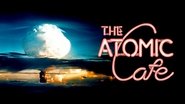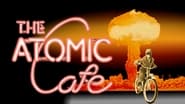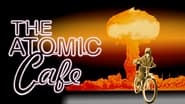john_vance-20806
The older boomers would recall the atmosphere of this era very well.The belief that nuclear weapons were probably going to fall at any time was accepted as a matter of course. Coming out of the carnage and rubble of WW2 perhaps that was to be expected, but the PSAs and political leaders honed that message to suggest it was not much more of a concern than a flock of tornadoes. "Duck and Cover" ads, back yard bomb shelters, Conelrad symbols on the radios (AM of course), public fallout shelters in the bank basements and other related markers were given little thought.Younger folks would get a kick out of the over-simplified logic and ham-handed propaganda and be astonished to think that we took it for granted that nuclear warfare was just a dirty conventional tactic similar to the London Blitz.It is an informative film and very entertaining in its odd way. Worth a watch for interested parties.
dougdoepke
The movie's a quirky documentary assembled from news clips from the '40's and '50's, showing how Americans learned to live with The Bomb if not exactly love it. It looks like the clips are selected with the idea of justifying The Bomb's existence, and then soft-pedaling its destructive power. Of course, the black humor lies in showing that destructive power in the leveled cities of Hiroshima and Nagasaki and then contrasting that with anemic defensive measures like the infamous Duck and Cover. Naturally, some sort of civilian measures became necessary once the Soviets came up with their version of the A- bomb making nuclear war a real possibility.As a result, politicians and the Pentagon had a big challenge convincing the public not to seek nuclear disarmament as one way of dealing the problem. So, we see efforts to demonize our former ally, the Soviets, plus our own disarmament advocates, in pretty crude terms. Then there are efforts to calm public anxiety through counter-measures, such as bomb shelters and gas masks, along with Duck and Cover. Also, there's considerable grim humor in the way commercial culture trivializes the threat by naming drinks and cafés after The Bomb. After all, what would pack a bigger advertising wallop than a few thousand tons of exploding TNT.Anyway, the movie uses irony and black humor to convey a pretty good sense of an anxious period.(In passing-- Even though we've managed to dodge the nuclear bullet for 60-odd years, it's best to keep in mind that fateful day in 1962, when only a Soviet submarine commander's refusal to press the nuclear button stood between us and a real test of Duck and Cover. For confirmation of this little known fact, Google "soviet submarine commander cuban missile crisis", or "vasili arkhipov" for details.)
MartinHafer
"The Atomic Cafe" is an interesting documentary that strings together US government propaganda films and archival footage from atomic era. Starting with the first atomic test through the Cold War, this film weaves these clips together into a history lesson. I appreciate how the clips were not just tossed together willy-nilly but actually were done chronologically and logically. At first, clips tend to talks very naively about the atomic bomb--showing solders watching the test blasts with minimal protection. Then the film focuses on fears in the West about communism and the Soviet Union.So why is my score relatively low? Well, this film is a great example of too much. At about an hour and a half, the viewer is left numb--overwhelmed by too much. I think the film would have been better had it been shorter as sometimes more is not better. I found my attention drifting after a while and it was tough sticking with this one--even though it was clever.
kmsp1079
When I viewed this video all I kept thinking was, I actually lived through this. It's on target and shows just how bizarre the world was at that time. I've read many who have said it was at times boring, but for my generation, it was anything but. Imagine being 12, being at home after school, and watching cartoons....instead of watching commercials on Wonder bread, we were watching commercials on how to ...in an event of a nuclear strike...to run to the nearest shelter and continue to "wipe" off the nuclear fallout.In '62, during the Cuban missle crisis, my dad was busy building a bomb shelter in our backyard. It's still there though he made it into a workshop after the crisis was over. Someone else has since bought the house and workshop but I doubt they know the origins of the workshop, even though there is still a pipe for water in the middle of the structure. I still can't imagine 5 people living in a shelter roughly the size of 12feet by 12 feet for 30 some odd years. In retrospect, I think death by radiation would have been easier.As I've said...it was a bizarre world then. .









